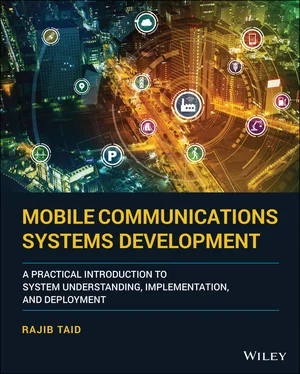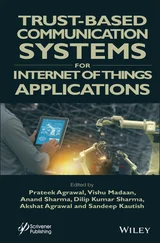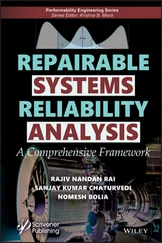13 Test Yourself!Introductions A.1 5G Mobile Communications and Systems Concepts A.2 Software Program Development Exercises
14 References Further Readings
15 Index
16 End User License Agreement
1 Chapter 2 Table 2.1 Network elements comparisons. Table 2.2 Evolutions of 3GPP systems and their air interfaces. Table 2.3 Summary of 3GPP Releases and their features.
2 Chapter 3 Table 3.1 GSM and GPRS system network elements and logical interfaces. Table 3.2 UMTS system network elements and logical interfaces. Table 3.3 LTE/EPS network elements and logical interfaces. Table 3.4 Interworking features and their logical interfaces. Table 3.5 Logical and physical interface between RAN and CN elements. Table 3.6 UMTS and LTE access stratum control plane protocol layers. Table 3.7 NAS protocol messages from GSM to LTE system. Table 3.8 Protocol layer in UMTS (Iu), LTE system (S1), and 5G NG over IP.
3 Chapter 5 Table 5.1 GERAN‐UTRAN to E‐UTRAN‐EPC: identities mapping.
4 Chapter 6 Table 6.1 Interworking methods: network elements and their logical interfaces... Table 6.2 GPRS, UMTS, and LTE UE mode of operation.
5 Chapter 7Table 7.1 NRI and its source identifier.Table 7.2 UEs distributions in MME pool using the WRR method.Table 7.3System information (SI) messages for MOCN PLMN identities.
6 Chapter 8Table 8.1 IP header compression/decompression methods.
7 Chapter 9Table 9.1 Summary of security features and its network elements.Table 9.2 Temporary identities used for subscriber identity confidentially.Table 9.3 Keys and algorithm used for subscriber identity authentication.Table 9.4 Ciphering algorithms and keys used for information confidentiality.Table 9.5 Algorithms and keys used for integrity protection.Table 9.6 Protocol layers: ciphering and integrity protection.Table 9.7 Security context contents in GSM, GPRS, UMTS, LTE and 5G systems.
8 Chapter 14Table 14.1 Value and meaning of skip indicator.Table 14.2 Layer 3 and NAS message format contents.Table 14.3 S1‐AP, X2‐AP, NG‐AP, Xn‐AP, and RANAP elementary procedure classes...
9 Chapter 16Table 16.1 LTE/EPC and 5G core network elements.Table 16.2 Identities mapping from 5G core to LTE/EPC.Table 16.3 Authentication vector for UE authentication using 5G and EAP AKA.
10 Chapter 17Table 17.1 Summary of air interfaces control plane protocol layers.
11 Chapter 18Table 18.1 RRC states vs. UE mobility.Table 18.2 Handover types and scenarios by network element.
12 Chapter 19Table 19.1 GSM, UMTS, LTE, and NR physical channel definitions.Table 19.2 Channel mappings at NR MAC layer.Table 19.3 Radio access, modulation methods, and frame duration.Table 19.4 NR operating frequency ranges and duplexing modes.Table 19.5 NR frames and slots for different NR subcarrier spacings.Table 19.6 NR frames and slots for different NR subcarrier spacings.Table 19.7 NR resource allocation and VRB‐To‐PRB mapping types.Table 19.8 NR transport channels and their processing chain and coding method...Table 19.9 NR transport channel to physical channel mappings.Table 19.10 Transport channels and their coding steps and schemes.Table 19.11 PDCCH aggregation level and candidates PDCCH.Table 19.12 PDCCH search space, purposes, and their RNTIs.Table 19.13 NR DCIs formats, purposes, and their RNTIs.Table 19.14 NR physical channel types and their MCSs.
13 Chapter 20Table 20.1 5G network functions and their service interface name.Table 20.2 5GS reference points and their protocol and transport networks.Table 20.3 Authorizations roles of 5GC network functions with respect to OAut...
1 Chapter 1 Figure 1.1 Career opportunities in the mobile communications space.
2 Chapter 2 Figure 2.1 Network architecture and elements of a GSM network. Figure 2.2 Network architecture and elements of a GPRS network. Figure 2.3 Network architecture and elements of a UMTS network. Figure 2.4 Overall network architecture and elements of an LTE network. Figure 2.5 Illustration of circuit switched and packet switched data transfe... Figure 2.6 Network domains and their elements of mobile communication networ... Figure 2.7 Illustration of end‐to‐end flow of information in a mobile commun... Figure 2.8 Illustration: GSM MO call flow. Figure 2.9 Illustration: 3GPP systems and air interface evolutions. Figure 2.10 System architecture 3GPP Release 99. Figure 2.11 System architecture 3GPP Release 4. Figure 2.12 System architecture 3GPP Release 5. Figure 2.13 LTE system architecture with EPC nodes. Figure 2.14 Mobile communications network systems engineering. Figure 2.15 3GPP organizational partners/members. Figure 2.16 Example of a cover page of a 3GPP technical specification. Figure 2.17 Illustration: different stages of a 3GPP TS.
3 Chapter 3 Figure 3.1 Illustration: physical E1 interface configuration for GSM A‐bis i... Figure 3.2 Illustration: physical air interface for GSM, UMTS, LTE, and 5G N... Figure 3.3 (a) LTE S1 and 5G NG logical interface: user plane. (b) LTE S1 an... Figure 3.4 LTE/EPS logical interfaces: S3, S4, S5, S8, S10, and S11 protocol... Figure 3.5 GPRS: Gb‐interface protocol stack with IP and frame relay transpo... Figure 3.6 Protocol layers classifications in GSM, GPRS, UMTS, LTE, and 5G s... Figure 3.7 LTE network end‐to‐end control plane protocol layers. Figure 3.8 LTE UE – P‐GW user plane protocol layers. Figure 3.9 UMTS, LTE, and 5G air interface protocol layer groups. Figure 3.10 LTE E‐UTRAN: access stratum and non‐access stratum protocol stac... Figure 3.11 LTE access stratum RRC connection establishment procedure. Figure 3.12 Illustration: LTE/EPS ATTACH procedure: NAS protocol messages. Figure 3.13 Illustration: NAS layer messages for a 5G PDU session establishm... Figure 3.14 Initialization of LTE/EPS S1 interface. Figure 3.15 Illustration: air interface sublayers: GSM, GPRS, UMTS, LTE, and... Figure 3.16 Illustration: protocol information conversions in a cellular sys... Figure 3.17 Illustration: A working model of protocol layer. Figure 3.18 Illustration: general protocol layer model of UTRAN, E‐UTRAN, an... Figure 3.19 Illustration: general protocol layer model of UTRAN and E‐UTRAN.... Figure 3.20 Iu interface transport network: data link layers. Figure 3.21 Illustration: GSM air interface Layer 3 protocol stack. Figure 3.22 Illustration: LTE/EPS NAS transport between eNodeB and MME over ...
4 Chapter 4 Figure 4.1 Components of an IE of a protocol message. Figure 4.2 Presence requirements of an IE of a protocol message. Figure 4.3 Standard formats of air interface layer 3 messages IEs. Figure 4.4 LTE/EPS NAS layer 3 attach complete message. Figure 4.5 LTE/EPS NAS layer 3 ESM information request message. Figure 4.6 Illustration: encoding and transmission of air interface message.... Figure 4.7 Illustration: TLV Vs PER encoding method. Figure 4.8 LTE/EPS MME‐ENodeB: S1‐AP: downlink NAS transport.
5 Chapter 5 Figure 5.1 Network identities, their persistency, and presence. Figure 5.2 Illustration: identities for LTE network elements. Figure 5.3 Illustration: components and derivation of a GUTI. Figure 5.4 Illustration: LTE physical layer cell identities (PCI) and groups... Figure 5.5 GPRS MS identity: mapping of an NRI and TLLI into a P‐TMSI. Figure 5.6 Illustration: UE identities mapping: GERAN/UTRAN to E‐UTRAN.
6 Chapter 6 Figure 6.1 Illustration: LTE network and IMS interworking for VoLTE call. Figure 6.2 Reference architecture of an IMS. Figure 6.3 Allocation of default bearer with QCI = 5 for IMS signaling. Figure 6.4 Illustration: registration of UE in an IMS. Figure 6.5 Illustration: VoLTE call between IMS registered UEs. Figure 6.6 Illustration: legacy and LTE network interworking for VoLTE call ... Figure 6.7 Illustration: VoLTE call HO through SRVCC feature. Figure 6.8 Illustration: legacy and LTE network interworking for CSFB. Figure 6.9 Illustration: LTE voice call: MO‐MT voice call through CSFB. Figure 6.10 Interworking of LTE/EPS with GERAN and UTRAN through legacy netw... Figure 6.11 LTE/EPS Roaming: routing of user data by the HPLMN for roaming u... Figure 6.12 LTE/EPS Roaming: routing of user data by the VPLMN for roaming u... Figure 6.13 Roaming through interoperation of legacy network elements.
Читать дальше












